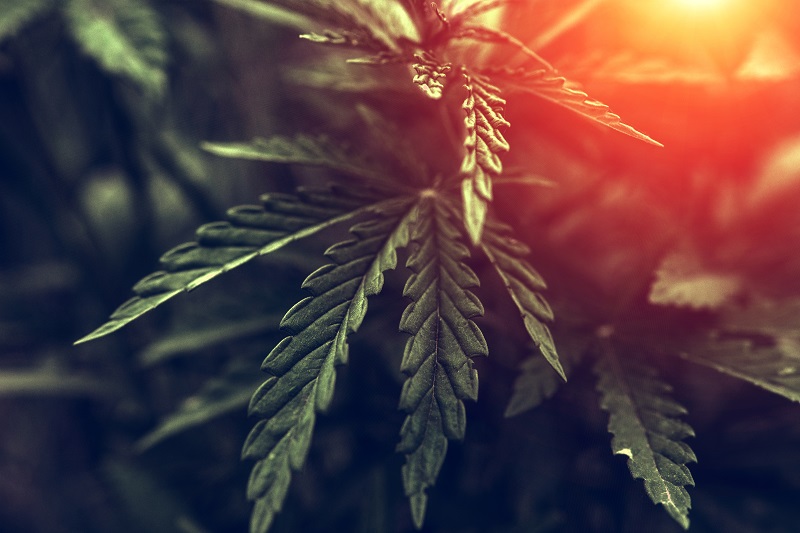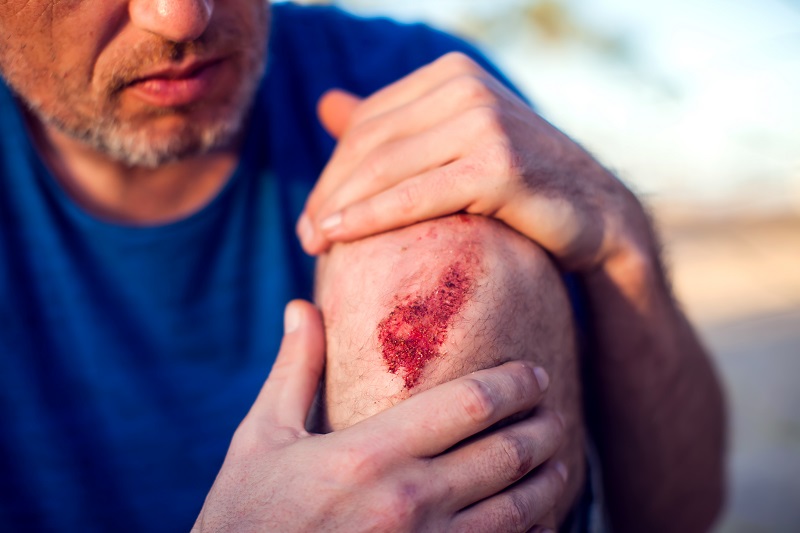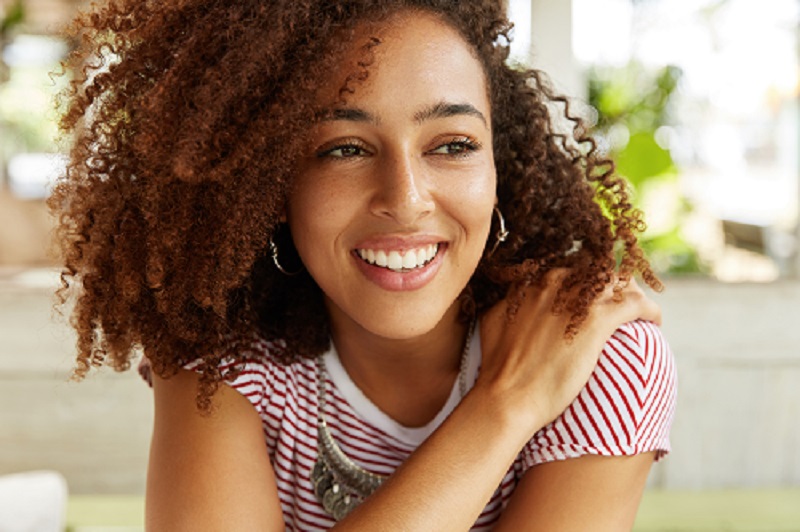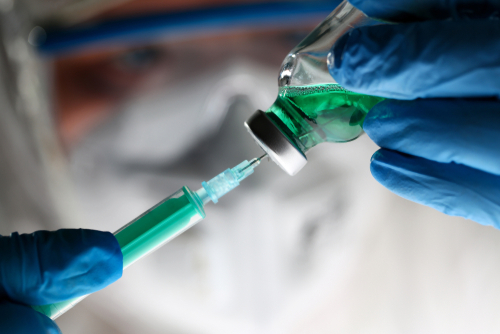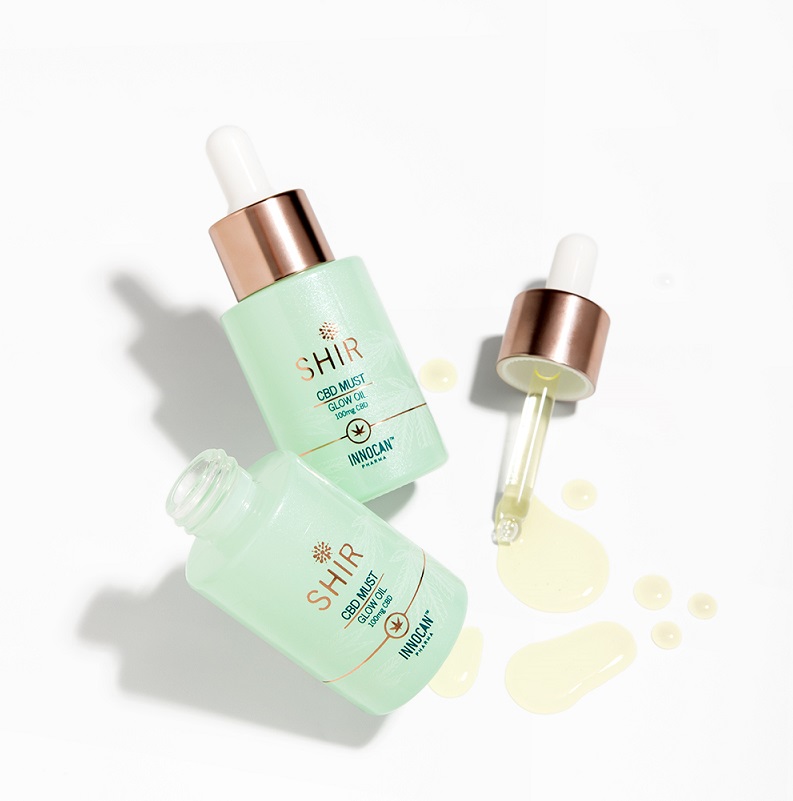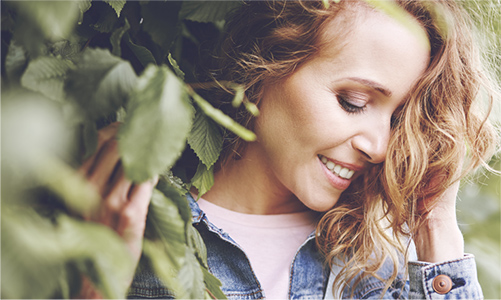Addressing Wrinkles with CBD Sleeping Mask
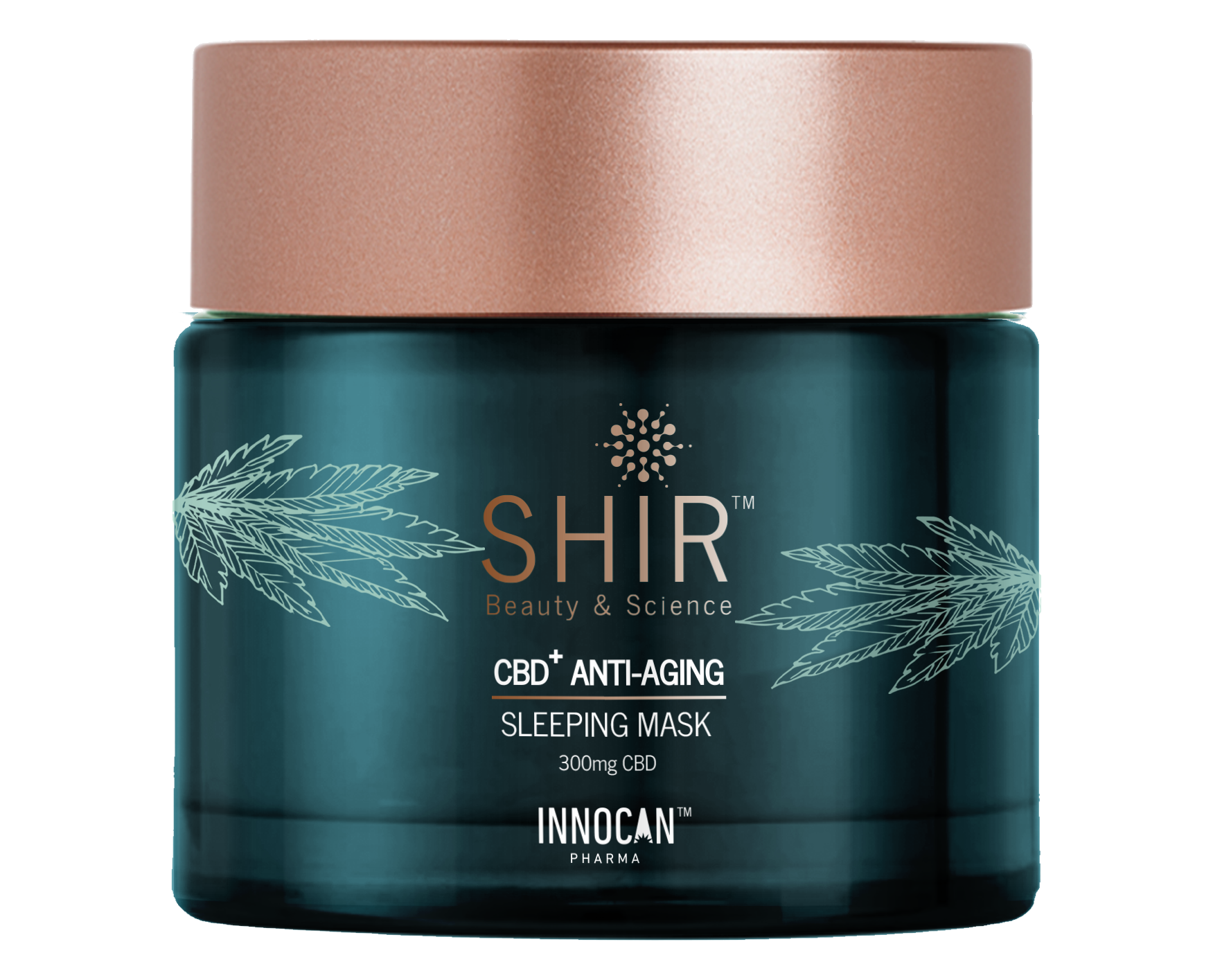
One of the most distressing consequences of aging is fine lines and wrinkles that appear on the face, neck, and hands. The skin’s exposure to external forces, including pollutants, weather conditions, ultraviolet rays, along with lifestyle choices such as smoking, wrong diet, or stress, makes it vulnerable to the consequences of aging.
CBD has attracted the interest of researchers across the world for its non-toxic, non-psychoactive skin health properties, which has made it a popular therapeutic agent in the beauty and wellness industry. A CBD-infused sleeping mask can be the solution to achieving a spotless, radiant skin free from fine lines and wrinkles.
Origins and history of CBD
CBD or cannabidiol is derived from the cannabis plants, which are a group of recreational, medicinal, and fiber plants that belong to the Cannabaceae family. According to some classifications, the genus Cannabis includes a single species of plant known as hemp or Cannabis sativa, an aromatic, stout annual herb that has Central Asian origins and cultivated worldwide.
Cannabidiol is one of the chemicals extracted from Cannabis Sativa. The substance is typically mixed with other essential or carrier oils such as coconut, olive, or hemp oils in the production of facial cream, sleeping mask, eye serum, body oil, anti-aging facial serum, and other CBD-infused products.
Robert S. Cahn, a British chemist, first discovered the partial structure of an individual cannabinoid (Cannabinol), the full form of which was revealed by him in 1940.
In 1942, Roger Adams, an American chemist, discovered Cannabidiol (CBD). The stereochemistry (spatial arrangement) of CBD was discovered by the Israeli professor and scientist Raphael Mechoulam in 1963. The structure of Tetrahydrocannabinol (THC) was identified the following year.
As the two compounds possessed molecular similarity, CBD was thought to be THC’s natural precursor originally. However, subsequent research has shown that CBD and THC are independently produced in the cannabis plant.
More than 480 natural components are present in the Cannabis sativa plant. Out of these, 66 compounds have been identified to be “cannabinoids.”
The cannabinoids have different subclasses, including:
- Cannabigerols (CBG)
- Cannabidiols (CBD)
- Cannabichromenes (CBC)
- Tetrahydrocannabinols (THC)
- Cannabinol (CBN)
- Cannabinodiol (CBDL)
- Other cannabinoids including cannabicyclol (CBL), cannabitriol (CBT), cannabielsoin (CBE), and others.
Why do wrinkles occur?
To understand the pathophysiology of visible signs of aging, such as wrinkles and fine lines, it is important to first understand how the skin is structured and its functions. As the largest of all organs in the human body, the skin’s primary function is to act as a barrier against pathogens. Apart from offering multi-layer cushioning for internal organs, the skin has cellular barriers and protective oils that keep the skin’s surface hydrated and healthy.
The functions of the skin, however, go beyond providing a protective barrier for environmental dangers. It plays a proactive role in health by gathering sensory information and body temperature regulation.
Layers of the skin and their importance
The epidermis, dermis, and subcutaneous tissue are the three layers of the skin.
Epidermis: The outermost layer is the epidermis, and its thickness tends to vary based on where it is located in the body. For example, it is thicker on the soles and palms while being thin on the eyelids.
The epidermis is comprised of five layers:
- Stratum basale: Known as the basal cell layer, Stratum basale is composed of columnar-shaped cells that divide continually and push older cells towards the surface of the skin. The older cells flatten out as they are driven upwards and eventually die, which are then shed. This is the bottom-most of all layers in the epidermis.
- Stratum spinosum: Above the stratum basale is stratum spinosum, which is the squamous cell layer. Being the thickest layer in the epidermis, it contains newly formed keratinocytes, which are a form of specialized cells that produce keratins. Keratins are tough and fibrous proteins that are present in nails, skin, and hair and impart structure and strength. Stratum spinosum is also composed of Langerhans cells that play a key role in infection prevention.
- Stratum granulosum: The layer that is below stratum spinosum is also made up of keratinocytes.
- Stratum lucidum: This is the thin and transparent layer present in only those areas that have thick skin, including palms and soles. This layer has dead skin cells.
- Stratum corneum: This is the uppermost layer in the epidermis and contains dead keratinocytes that are periodically shed.
This epidermis also has certain other specialized cells known as melanocytes that produce a pigment called melanin, as well as Langerhans cells that are part of the immune system.
Dermis: This is the middle layer of the skin that sits below the epidermis and houses oil glands, sweat glands, hair follicles, nerve endings, connective tissue, and blood capillaries. The papillary dermis is the uppermost layer of the dermis, while reticular dermis forms the bottom layer.
The dermis contains the most important skin health proteins called collagen and elastin, apart from reticular fibers.
Collagen is found in all tissues across the human body, such as muscles, bones, tendons, and abundantly in the skin. As a structural protein, collagen provides strength and structural integrity to the skin. By forming fibroblasts, which is a fibrous cellular network, collagen helps in new cell growth. The protein is also involved in the shedding of old, dead skin cells while replacing these with new ones.
Elastin, as the name suggests, is an elastic or stretchable protein that enables the skin to stretch and contract, enabling the skin to return to its original position after it is stretched or pinched, for instance.
Subcutaneous tissue: This layer sits below the dermis and contains large blood vessels, fat, connective tissue, and nerves.
Subcutaneous tissue is involved in body temperature regulation, apart from protecting internal organs against trauma and external injury.
The aging mechanism
The aging process begins at the cellular level, where random molecular damage accumulates slowly with age. While the body cells can remove or repair such damage, the efficacy of these mechanisms is not 100% and declines with age.
There are multiple molecular mechanisms involved in the process of aging, and exogenous (external) factors, including stress and environmental pollution, also hasten the aging process.
Kirkwood proposed that the aging mechanism is linked to unrepaired molecular damage that occurs randomly over time. This leads eventually to tissue dysfunction and cellular defects, resulting in age-related diseases.
All molecular components are vulnerable to such damage, including proteins, DNA, lipids, and organelles. Sources of damage can be:
- Internal factors, such as reactive oxygen species (ROS)
- External factors, such as exposure to UV light, environmental toxins
- Other factors such as stress, diet, genetics, physical activity, smoking
Research has also shown that a reduction in collagen is a characteristic of chronologically aged skin, which can be enhanced with ultraviolet photodamage. While the destruction of collagen that is present in the skin plays a central role in the undesired changes that are seen in the aged skin such as wrinkles, folds, creases or fine lines, failure to replace this damaged collagen with new ones is critical to preserving the skin’s integrity.
With less collagen produced, the skin gradually loses its elasticity and firmness while the skin continues to become thinner. The decline in skin oil production that keeps the skin hydrated also adds to the complexity of the aging process, with the result being increased fine lines and wrinkles.
Pollutants and smoking can also increase the ROS or free radical damage where the radicals initiate a chain of reactions or oxidation reactions at the cellular level. These sets of reactions damage the healthy cells’ DNA, and such damage has been implicated in many chronic illnesses, including cancer, heart disease, Alzheimer’s, and many other auto-immune conditions.
Anti-aging effects of CBD-infused sleeping mask
Research shows that the endocannabinoid system (ECS) plays a key role in multiple body functions along with its constituent endocannabinoids. These endocannabinoids are neurotransmitters that attach themselves to cannabinoid receptors. The ECS regulates a host of biological processes that includes pain sensation, appetite, immune function, memory, and mood. CB1 and CB2 are two cannabinoid receptors that are distributed widely across the human cells. While CB1 receptors are concentrated in the brain, the immune system, gastrointestinal system, and peripheral tissues have CB2 receptors.
A review that examined the role of ECS in aging found that it influences a lot of skin cell functions such as cell differentiation, growth, proliferation, hormone production, and cell death. Research also supports that activation of the CB2 receptor can exert anti-inflammatory effects. CBD’s indirect mechanisms of CB2 activation are the reason why it is recognized increasingly as a therapeutic agent for treating a host of skin-related conditions, including wrinkles and fine lines.
How does CBD-infused sleeping mask reduce signs of aging?
Topical (transdermal) CBD applications such as sleeping mask help deliver CBD to the skin’s deeper layers. Topical administration, as compared to the oral route, has many advantages as it does away with the need to go through the complex metabolic process. This ensures CBD applied through a sleeping mask or facial cream is more bioavailable. Using topical CBD-infused sleeping masks, eye serum, or facial cream also minimizes the overdose risk associated with oral routes, enabling longer and safer usage.
Excess exposure to environmental pollutants and ultraviolet rays are linked to many skin conditions such as sunburn, skin sensitivity, sun damage, as well as premature aging. Melanin that is produced by melanocytes, the specialized cells in the epidermis, exerts a protective effect against extrinsic stressors that promote cellular damage such as pollutants and UV rays.
Researchers examined the role CBD plays in stimulating melanin production in a process known as melanogenesis. They concluded that CBD effectively increased the amount of melanin that is produced in the epidermis, suggesting the therapeutic potential of topical CBD such as sleeping masks in preventing accelerated aging from external factors such as UV radiation and pollutants.
Many plants and their derivatives are known to possess antioxidant properties. CBD is also derived from a plant source and has been extensively studied for its excellent antioxidant properties. The antioxidants in CBD -infused sleeping mask, anti-aging facial serum, or eye serum neutralize free radicals (ROS) and can reverse the distressing aging signs such as wrinkles and fine lines. It has also been found in studies that CBD’s antioxidant properties are more powerful as compared to some of the strongest antioxidants found in plant sources such as vitamin E and vitamin C.
Anti-inflammatory effects: Inflammatory pathways have been linked to many skin conditions, including scaliness of the skin, acne, allergies, and other injuries, all of which can destroy natural collagen. Researchers who evaluated CBD’s anti-inflammatory effects concluded that it prevents excessive keratinocytes production that is believed to be the cause behind skin inflammation in conditions like psoriasis. A 2019 study evaluated the therapeutic benefits of CBD-infused topical agents such as a sleeping mask or facial cream on inflammatory skin diseases. When CBD topical agents were administered twice a day, the researchers found that severe symptoms associated with chronic skin conditions such as psoriasis or atopic dermatitis were reduced, with no negative side effects.
Topical CBD administration has been proven in many studies to be an effective and non-invasive way to treat age-related symptoms such as crow’s feet, wrinkles, and fine lines.
CBD’s anti-inflammatory and antioxidant properties ensure a CBD-infused agent such as undereye cream or sleeping mask address other skin conditions, including dark circles, undereye puffiness, and soreness.
Collagen production: A 2015 study on the efficacy of cannabinoid ligands to heal fractures found that CBD enhanced the biomechanical processes of fracture healing in animal models. Through a complex mechanism, CBD enhances collagen crosslinking enzymes that promote healing in fractures. By stepping collagen, the key skin health protein, CBD can effectively reduce wrinkles and fine lines.
While research is ongoing concerning topical CBD’s therapeutic effects, available research shows CBD-infused sleeping mask can help combat age-related problems including:
- Loss of collagen
- Fine lines
- Wrinkles
- Skin dryness
- Inflammation
- Dullness of skin
More articles:

